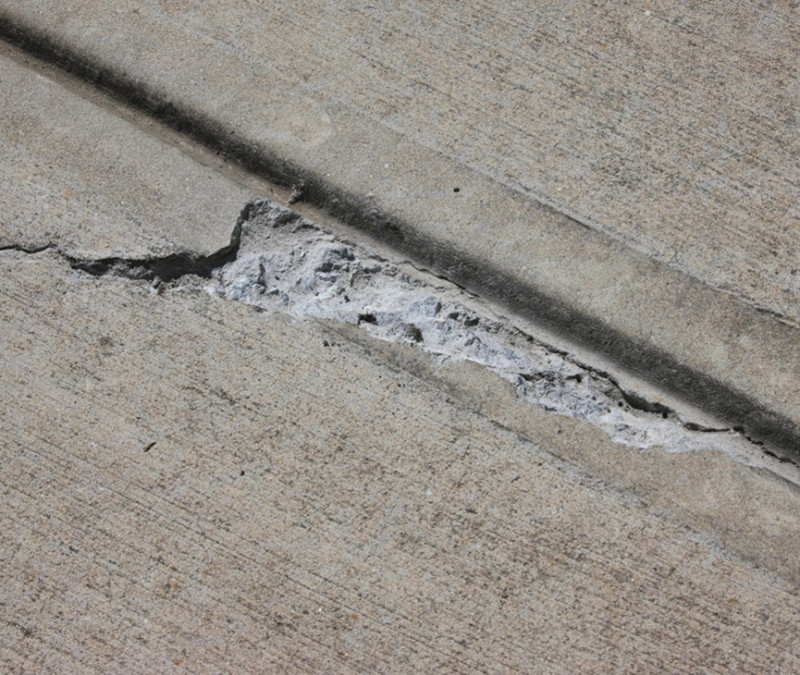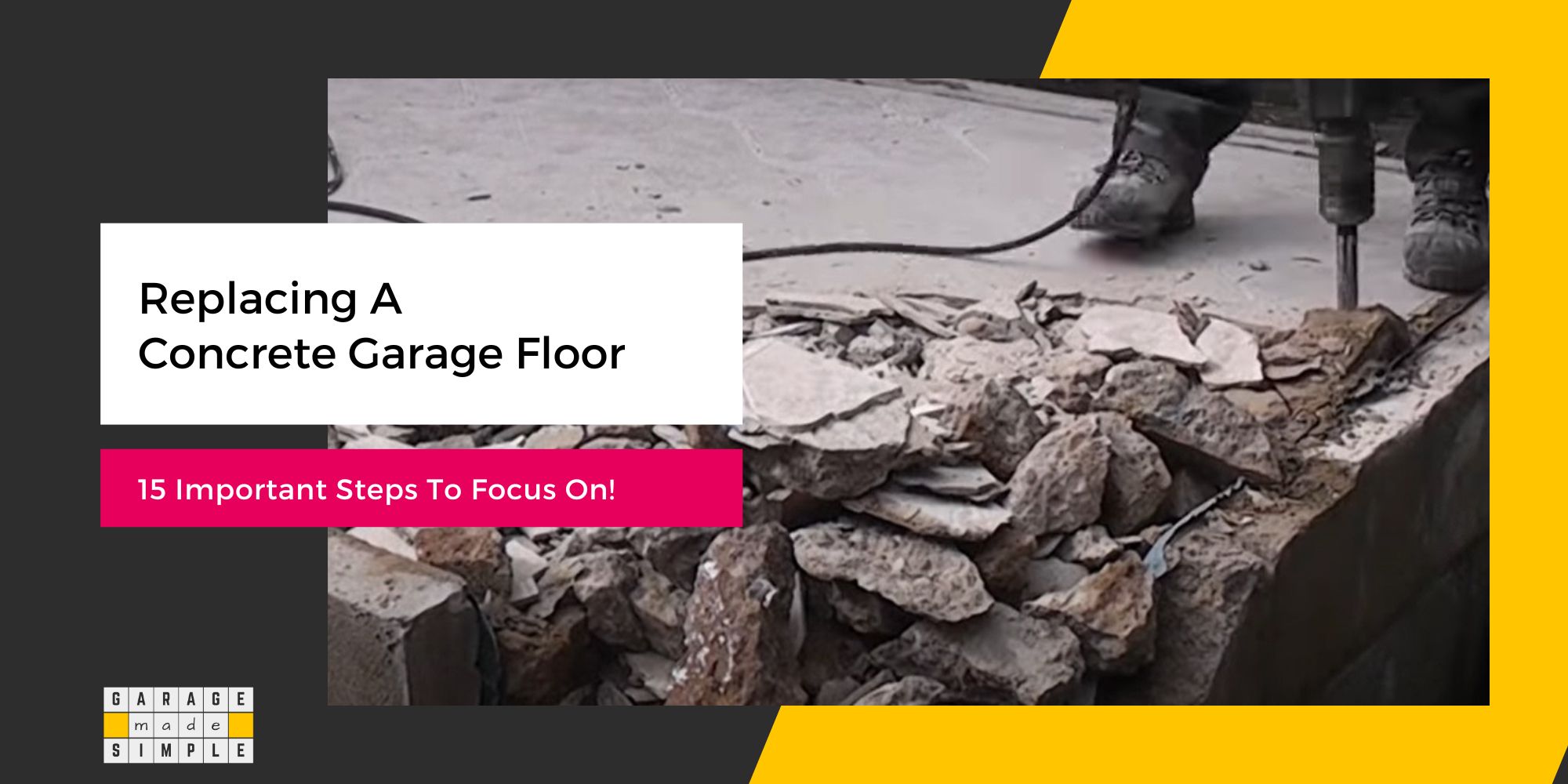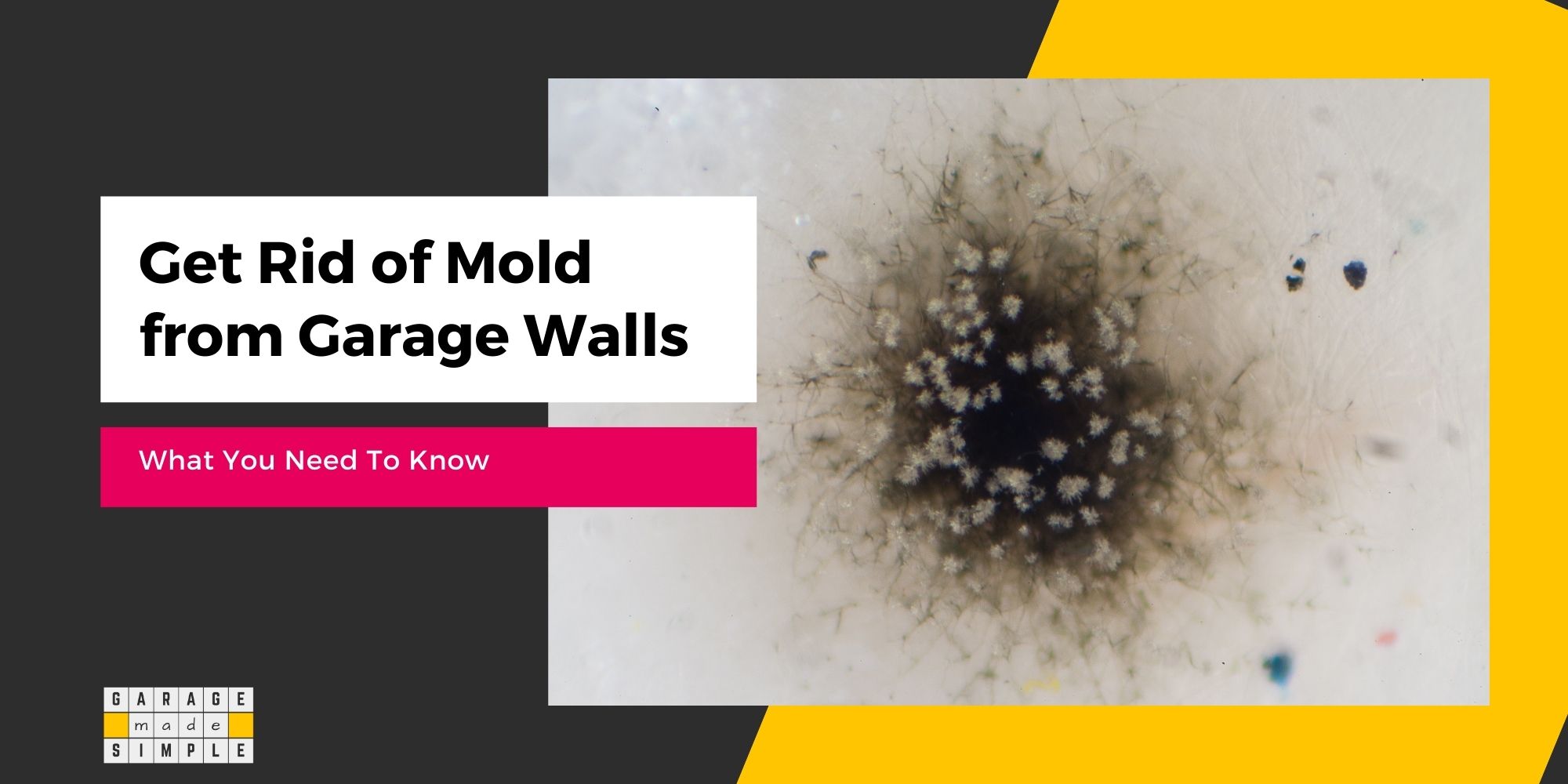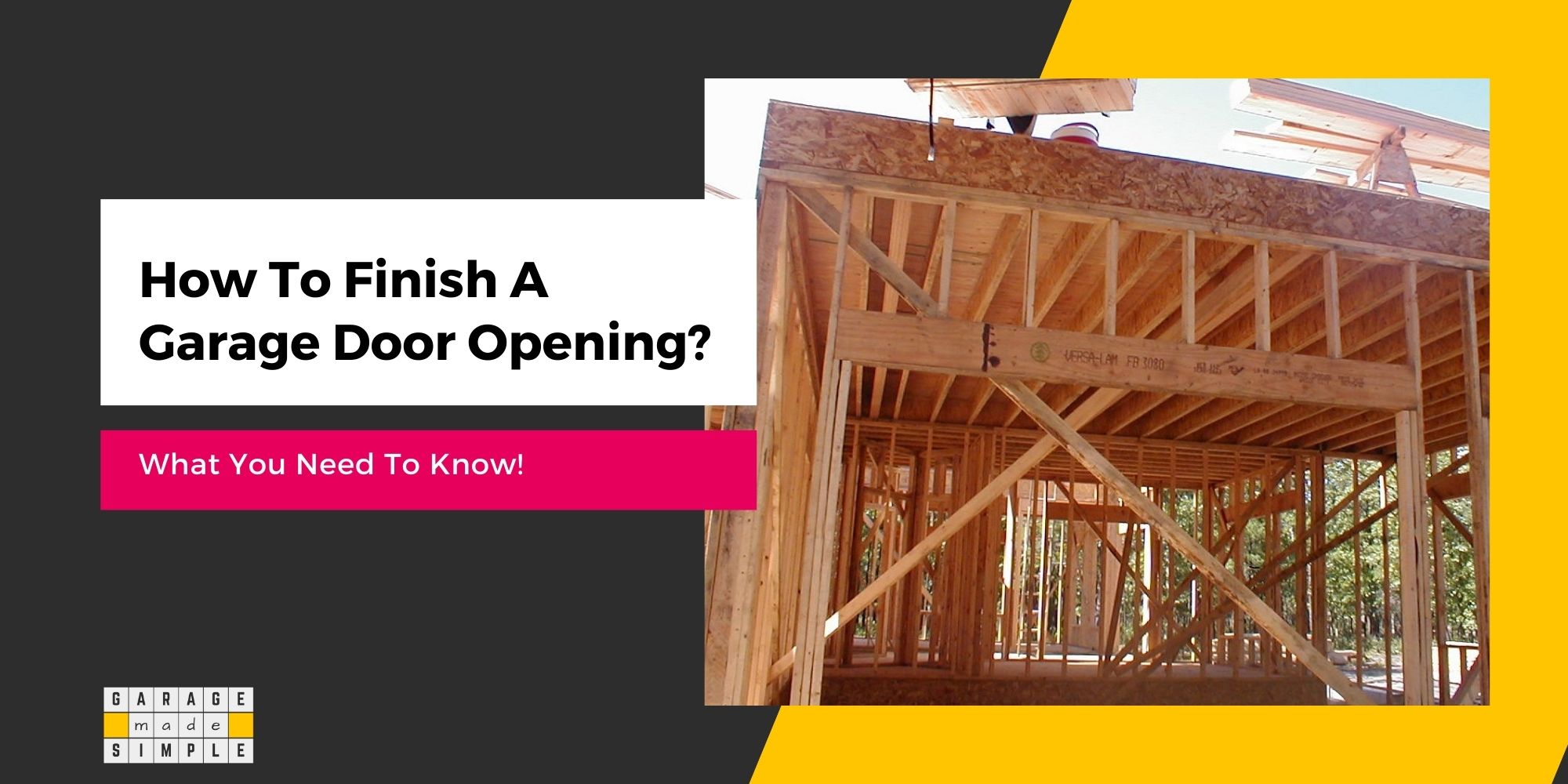12 Reasons Why It Is Best Not To Pour New Concrete On Old
As an Amazon Associate, I earn from qualifying purchases.
You may be considering pouring new concrete over your old concrete floor because the old surface is crumbling, heavily cracked or pitted.
Beware! This may create more problems than you bargained for.
Actually, there are 12 reasons why you should not be pouring new concrete over an old concrete garage floor. The new concrete will
- Raise the floor level.
- Increase the load.
- Not bond with the old.
- Need to be “stitched” to the old.
- Mirror the cracks of old concrete.
- Develop its own cracks.
- Need reinforcements.
- Need temperature controls.
- Need moisture controls.
- Need to be poured by an expert.
- Not Extend the Life.
- Not have any Guarantees.
In this post I will explain all the above reasons in some more depth. And stay on till the end of the post, as I will tell you what the good solutions are.

Reason #1: Pouring New Concrete On Old Raises The Floor Level
Of course when you pour a layer of new concrete the floor level will go up. It is an accepted practice that concrete thickness should be a minimum of 1 ½”. This is because the minimum aggregate size is ⅜”.
If the concrete thickness is less than 1 ½” then there won’t be enough cement to bind the aggregates and the concrete will be very weak. It will be crumbling in no time.
Now adding another 1 ½” (or even 3 – 4” as is usually the case) of height to the floor is not a problem for an outdoor job, such as a driveway, patio or pool deck.
But this can have serious issues in indoor situations.
What do you do about the gap between the bottom of the existing door and the raised floor level? This may require you to re-adjust the garage door, the garage entry door to the house and some other wall fixtures.
Reason #2: Pouring New Concrete On Old Increases The Load
Concrete has weight. A typical concrete mix weighs 150 pounds per cubic foot. Now a typical two car garage may be 20’ wide and 20’ deep. That is an area of 400 square feet.
For a 2” thick new concrete overlay you would need to pour around 67 cubic foot of concrete mix. That is an additional weight of 10,000 pounds (5 tons)!!
Double that if you want a 4” thick layer!
Can the footing, foundation and slab base take this additional load? Is the structure designed for the extra load?
Reason #3: New Concrete Does Not Bond Easily With The Old
The question is “Should new concrete bond with old concrete?”
The accepted practice is that if the new concrete layer is less than 3” thick then it must be bonded with the old concrete.
But then there is nothing in the new concrete that will make it bond with the old concrete. Portland cement, which is the binder within the concrete mix, is no good at bonding with old cured concrete.
So you need a “bonding agent”.
The bonding agent is a concrete additive. However, most bonding agents do not work very well and create their own set of problems.
Moreover, the process of application of the bonding agent requires a lot of professional experience. An inexperienced applicator may not be able to “read” the old concrete well and that may result in patchy bonding.
On the other hand, if the new concrete layer is more than 3” thick then it need not be bonded with the old concrete. It should be treated as an independent concrete slab that is just using the old concrete slab as a base.
In fact you need to use a “bond breaker” (rather than a bonding agent) to keep the two slabs (the new and the old) separate.
Reason #4: Stitching The Two Slabs Will Be Required
Now if you are going to put a relatively thin layer of new concrete, i.e. between 1 ½” to 3” then you have to get them to bond together. In other words stick to one another in a manner that they behave as one slab and not two disconnected slabs.
There are two ways to do this
Chemical Bonding
This is the use of a bonding agent. Most of them do not work that well. There are a few which do such as
QUIKRETE® Concrete Bonding Adhesive (No. 9902) permanently bonds new concrete, plaster, and stucco to existing concrete, plaster, and stucco. Eliminates the need for roughing the surface before the application.
- Bonding New Concrete to Old Concrete
- Bonding applications on concrete overlays 1″ or thicker
- Interior or exterior applications
SAKRETE Concrete Bonder & Fortifier is a latex copolymer that may be used as either a paint-on bonder (straight from the bottle) or as a fortifier/ admixture (mixed 1:1 with water).
- Improves bond strength to existing concrete
- Improves resistance to water penetration
- Increases adhesion, impact strength and abrasion resistance
Weld-Crete® Concrete Bonding Agent
For exterior and interior use, Weld-Crete® will bond new concrete, Portland cement plaster and cementitious mixes to structurally sound concrete floors, walls, columns, beams, steps and ramps. Weld-Crete® can be “painted on” in a single application 1 hour to 10 days prior to concrete placement
Mechanical Bonding
This process can be likened to stapling two sheets of paper together. Holes are drilled in the old concrete slab in grid-like fashion. The holes are cleaned and filled with a strong liquid epoxy adhesive.
Steel bolts are then inserted in these holes making sure they get nicely coated with the epoxy adhesive. A inch or two of the bolt is left protruding upwards. The new concrete layer then uses the protruding bolts to latch on to the old concrete.

The trouble is that the process is time consuming, labor intensive and costs some. After all that it may not work if the old concrete was crumbling and not sound.
Reason #5: The Mirror Effect – Cracks In Old Will Appear In New
Cracks in concrete are pretty common. Some are more worrying than others. So you need to know the type of crack(s) your garage floor has and why concrete cracks.
There are 6 types of Concrete Cracks and they are caused by
- Plastic Shrinkage
- Concrete Expansion
- Premature Drying
- Heaving
- Settling
- Overloading the Slab
The first 3 causes are related to poor workmanship at the time of pouring of the initial concrete slab. The next 3 are related to the subsoil or the soil around the initial concrete slab.
In any case, pouring new concrete over old will only hide the cracks, temporarily. Sooner, rather than later the cracks in the old concrete will appear in the new concrete. Almost as if the new concrete was a mirror to the old concrete.
The solution is to address the cracks as best as possible. Check out my blog post What You Need To Know About Crumbling Garage Floor Repair for some ideas.
Reason #6: New Concrete Will Develop Its Own Cracks
After all the trouble that you go through, you may ultimately find that the new concrete actually has even more cracks than before. For one the cracks in the old concrete will get mirrored into the new concrete.
In addition the new concrete may have its own set of cracks caused by plastic shrinkage, concrete expansion and premature drying.
Reason #7: Pouring New Concrete On Old Needs Reinforcement
In case the new concrete layer is going to be thicker than 3” then it should not be bonded to the old concrete. As mentioned earlier you must use a “bond breaker” (rather than a bonding agent) to keep the two slabs (the new and the old) separate.
So the new concrete slab is independent and is using the old concrete slab only as a base. If the new concrete slab is thicker than 4″ then it will need to be reinforced with steel rebars or welded wire mesh.
Use of polypropylene fibers has also become popular in recent years.
Reason #8: Pouring New Concrete On Old Makes Moisture Control Difficult
The curing process is the process where a pliable concrete mix in a slurry form transforms into a rock solid strong hardened concrete. This happens by a chemical process called hydration.
In the hydration process, the cement reacts with the water to form crystals. The crystals grow into a matrix enveloping the sand and other aggregates in a tight mesh. This converts the concrete mix into a rock hard solid material.
Sufficient water during the curing process is critical for the strength of the concrete.
New concrete can crack or not achieve the desired strength if the presence of moisture and the rate of water evaporation is not controlled well.
Reason #9: Temperature Control Is Another Important Issue
Temperature plays a very important role in the setting or curing of concrete. This is because temperature and temperature gradients determine the rate of water evaporation from the new concrete placement.
It is important to have the temperature of the old slab close to the temperature of the concrete mix being poured. However, the concrete mix is generally at a higher temperature because of the exothermic reaction when water & cement are mixed.
Reason #10: It’s Not Easy – You Need An Expert
Pouring new concrete on old and actually making it work may seem like an easy job. It is not. There are too many variables involved.
Only experience and expertise in being able to make the correct assessment of the old concrete status and an accurate judgement of factors like temperature, moisture etc. has some decent chance of success.
Even professionals who pour concrete for a living may not have this kind of specialized skill set.
Reason #11: Pouring New Concrete On Old Does Not Add More Life
Concrete is an extremely durable building material. Concrete slabs are typically designed for a life of 30 years but usually last a lifetime.
Concrete structures that have lasted for 50-100 years are quite common.
However, when you pour new concrete on old you are not adding any more life to the structure. The life of the new concrete is the same as that of the old. You know that the strength of a chain is only as much as the strength of the weakest link.
In this case the weakest link is the old concrete slab!
Reason #12: The Contractor Will Never Give Any Guarantee
Maybe the last but a very important reason is that no floor repairer or contractor will give you any type of real guarantee for a job like this. He will give you his assurance that he will give it his best shot.
That’s it! Finally just a best shot. No guarantees!
So What’s The Solution To MY PROBLEM?
The reason you are wanting to pour new concrete over old are in fact the very reasons you should not be pouring new concrete over old.
Some of the common reasons for wanting to pour new concrete over old are:
Solution #1: Can Old Crumbling Concrete Be Repaired?
I can understand your frustration at seeing the old concrete of your garage floor crumbling. The dust on the floor never seems to go away. You have tried all kinds of sealers and even they are not helping.
So you think that pouring new concrete on it will rejuvenate the old crumbling floor and you will get a nice new concrete floor.
Not correct!
Sooner rather than later your new concrete floor will crumble too. It will crumble because the base on which you have placed is crumbling in the first place.
The solution is to completely demolish the old concrete and pour new concrete on freshly prepared grade.
Solution #2: Can A Cracked Concrete Slab Be Repaired?
I know deep cracks are hideous to look at. But pouring new concrete will hide them only for a while. The old cracks will simply continue into the new concrete as well.
If the old concrete is structurally sound, then you are better off filling up the cracks.
There are ways to do that. I recommend using SAKRETE | Top ‘N Bond Concrete Patcher

Solution #3: How Do You Fix Concrete Heaving?
Uneven Heaving or Sinking are not just ugly to look at. They could even become safety hazards. People tripping over them or furniture on castors overturning are real life possibilities.
Once again pouring new concrete over such a floor will only camouflage the defect for a short period of time. In fact this problem is not even coming from the old concrete.
Heaving concrete garage floor is not a problem from the old concrete. It is a problem from the soil movement under and around the concrete slab.
There are solutions to such problems.
- Install a slab pier system that connects the slab to stable soil or bedrock. Once installed, the system makes it possible to re-level settled slab sections.
- Raise settled concrete using SettleStop expanding foam. Injecting this high-density foam beneath the slab will fill voids and consolidate weak soil while also raising settled slabs back to their original position.
Bottom Line
The bottom line is that there are 12 reasons for not Pouring New Concrete On Old. Pouring new concrete on old will only hide the problem for a while, not eliminate it.
The problems that you see in your old concrete garage floor can sometimes be addressed by localized or specialized repairs.
But if there are no easy solutions, you have to put the good old jackhammer to work. Demolish the floor and lay a brand new concrete slab.
I know it sounds like a horrible and costly idea, but in the long run it is the only idea that will give you a permanent lifelong solution!
Thank you very much for reading the post. I do hope you found it informative and useful.






